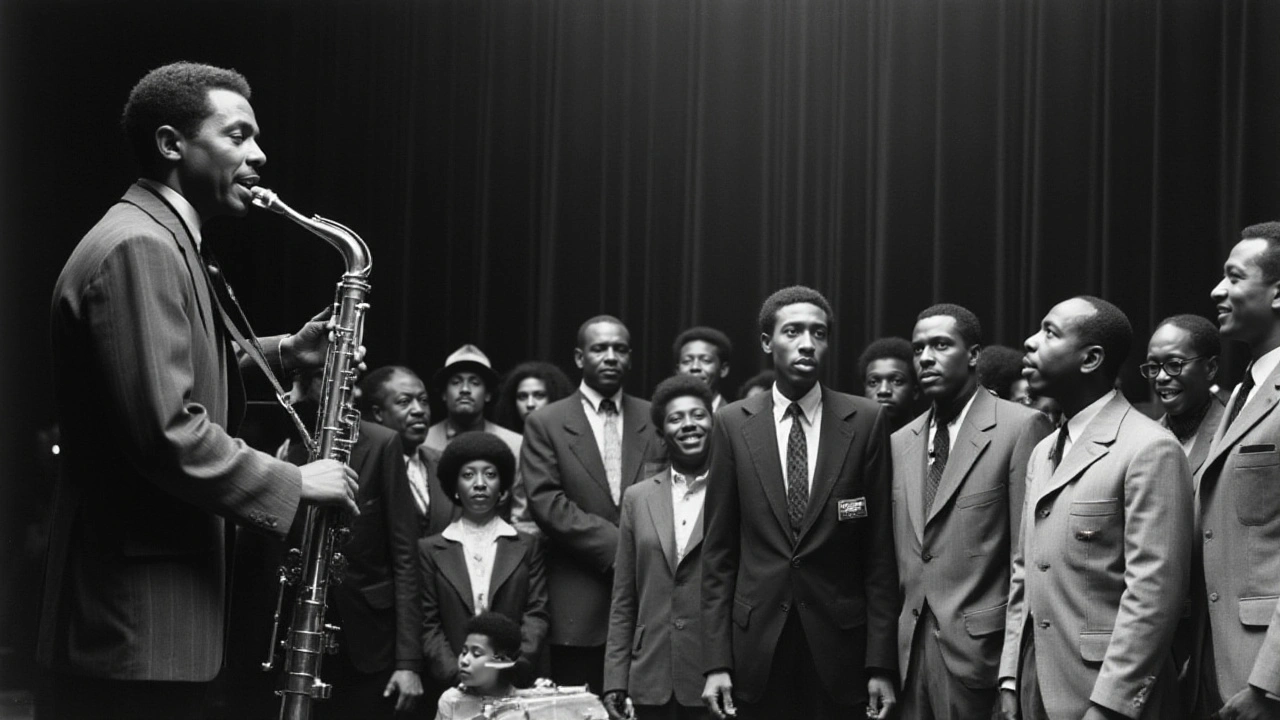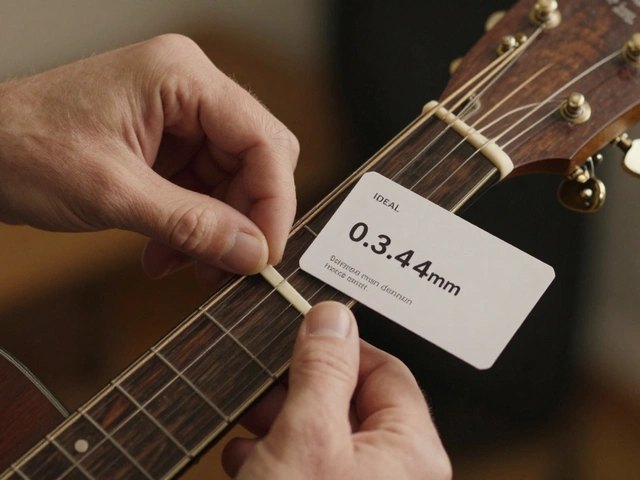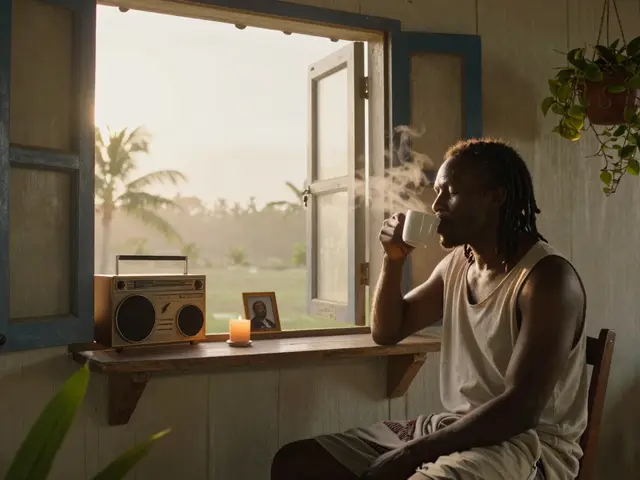Jazz, with its roots deeply embedded in African-American culture, became more than just a musical genre during the Civil Rights Movement. It was a powerful force for social change and a symbol of resilience and hope.
The article will delve into the profound influence of jazz musicians who used their platforms to fight for equality. These artists not only entertained but also inspired millions with their courage and creativity.
It will also explore the legendary venues where historic performances took place, becoming rallying points for activists and dreamers alike.
Through the analysis of lyrics and public statements, one can see how artists embedded their social messages in their art, pushing for justice and equality. The lasting impact of these efforts still resonates today, showing that music can indeed be a driving force for change.
- Jazz Musicians as Activists
- Iconic Jazz Venues and Events
- Lyrics and Social Messages
- Jazz's Lasting Impact on Civil Rights
Jazz Musicians as Activists
Jazz musicians were more than just entertainers; they were essential voices in the fight for civil rights. Their music was a socio-political act that resonated deeply with the struggles of African Americans and other marginalized communities. It wasn't unusual to see these artists standing as bulwarks against racial injustice.
One notable figure was John Coltrane, whose piece "Alabama" stands as a haunting response to the 1963 16th Street Baptist Church bombing that killed four young African American girls. Coltrane’s use of structure and mood to convey sorrow and resilience made it a touching tribute and a call for justice.
Charles Mingus, another towering figure in jazz, was known for his outspoken activism. His song "Fables of Faubus" was a direct criticism of Arkansas Governor Orval E. Faubus, who infamously opposed the integration of Little Rock Central High School in 1957. Mingus's refusal to remain silent was a hallmark of his career and an inspiration to many.
Nina Simone's commitment to civil rights is another example. Her song "Mississippi Goddam" angered and motivated many. Written in response to the murder of Medgar Evers and the bombing of 16th Street Baptist Church, the song's bluntness left no room for misinterpretation. Simone became a formidable voice for change, making music that was both deeply personal and undeniably political.
"An artist's duty, as far as I'm concerned, is to reflect the times." - Nina Simone
These artists used their concerts as platforms for outreach. Miles Davis, while being scrutinized for his confrontational style, often spoke out about racial inequality and America's systemic failures. His work and his words served as a powerful statement against the oppressive systems of the time.
Performances and recordings were not the only way jazz musicians participated in activism. Many took part in rallies and marches, standing shoulder to shoulder with civil rights leaders. For instance, Harry Belafonte not only performed at rallies but also used his influence and resources to support the movement. He was instrumental in funding and organizing events, showcasing how jazz and activism could work hand in hand.
While music was their primary tool, many musicians, like Max Roach and Abbey Lincoln, were also involved in creating music that spoke directly to social issues. Their album, "We Insist! Freedom Now Suite," released in 1960, was one of the first jazz works to address civil rights explicitly. It tied together the past struggles of African Americans with the then-current fight for equality.
In short, jazz musicians were not mere bystanders in the Civil Rights Movement. They took risks, faced backlash, and sometimes even danger, to ensure their voices were heard. Their contributions were instrumental in providing the soundtrack to one of America's most pivotal eras. The legacy of these courageous individuals remains etched in both the history of the Civil Rights Movement and the fabric of jazz music itself.
Iconic Jazz Venues and Events
Throughout history, jazz music has created its own revered temples of sound: venues where legends performed and history was made. These places became the epicenters of cultural revolutions, where music met activism and changed the world.
Perhaps one of the most famous of these venues is the **Apollo Theater** in Harlem, New York. Opened in 1934, it quickly became a cornerstone of African-American culture. Legends like Duke Ellington, Ella Fitzgerald, and Louis Armstrong graced its stage. The Apollo was more than a performance space; it was a communal site where ideas of activism and civil rights were as common as musical notes. The theater hosted numerous benefit concerts for civil rights organizations, blending entertainment with activism.
Another key site is the **Village Vanguard** in New York City's Greenwich Village. This intimate club has hosted countless jazz greats since its opening in 1935. During the Civil Rights Movement, it became a hub for intellectual exchange and artistic innovation. Renowned musicians like John Coltrane and Thelonious Monk used their performances to comment on the social issues of the time, making every note a statement.
"The Village Vanguard wasn't just a venue; it was a voice for change," remarked jazz historian Ted Gioia.
**Newport Jazz Festival**, founded in 1954, has its own vital place in history. Held in Newport, Rhode Island, the festival became a platform for jazz musicians to reach a wider audience. In 1960, the festival was a turning point with the performance of the Dave Brubeck Quartet, which included integrated band members. Their rendition of "Take Five" broke racial barriers and called for unity. This event proved that music festivals could serve as a powerful catalyst for social change.
The **Montreux Jazz Festival**, established in Switzerland in 1967, also played a pivotal role. American jazz musicians found an international audience that embraced their music and welcomed their messages. Miles Davis's 1973 performance was unforgettable, and his music spoke of freedom and resistance. This international platform amplified the voices of those fighting for civil rights back home.
Clubs like the **Blue Note**, opened in 1981, served as underground hubs during periods of intense racial tension. Musicians such as Charles Mingus and Art Blakey performed here, using their music to reflect the struggles of African-Americans. These performances weren't just about entertainment; they were charged statements against inequality and injustice.
Each of these venues did more than host performances. They were landmarks of cultural resistance, preserving the entwined legacies of **jazz music** and the Civil Rights Movement. They served as safe havens for African-American musicians and their allies, giving them the space to shout their truths and sing songs of freedom. Through these venues, jazz became the soundtrack of social change and an enduring symbol of resistance.

Lyrics and Social Messages
During the Civil Rights Movement, jazz artists didn't just play captivating melodies; they used their music to voice strong social messages. These musicians were keenly aware of the injustices around them and transformed their sentiments into powerful lyrics that resonated with their audiences. Jazz, rooted deeply in African-American culture, became a medium for storytelling and expression against racial oppression.
One of the most iconic examples is Billie Holiday's

Jazz's Lasting Impact on Civil Rights
When people think about the Civil Rights Movement, they often imagine marches, speeches, and sit-ins. However, jazz music played a critical role in this era of social change. The beauty of jazz was in its ability to communicate profound emotions and solidarity among those fighting for equality. It was more than just entertainment; it was a force that unified people and sustained hope during turbulent times.
An iconic figure who exemplified this influence was John Coltrane. His 1964 album 'A Love Supreme' was not merely a musical masterpiece; it was a spiritual journey that reflected his views on human rights and racial equality. This work brought to light the deep connections between music and social movements, resonating in ways that words alone could not. Coltrane's compositions served as a call for unity and peace and remain deeply significant even today.
Another powerful testimony to jazz's impact on civil rights was Billie Holiday's haunting song 'Strange Fruit.' This track brought the grotesque realities of lynching to mainstream awareness. The courage it took for Holiday to sing such a controversial song cannot be overstated. Time Magazine once called it the 'song of the century' for its chilling depiction of racial violence. Holiday's performance of 'Strange Fruit' continues to be a chilling reminder of the struggles faced by African-Americans in their quest for justice and equality.
"Jazz speaks for life. The Blues tell the story of life's difficulties, and if you think for a moment, you will realize that they take the hardest realities of life and put them into music, only to come out with some new hope or sense of triumph." — Martin Luther King Jr.
Another aspect of jazz's lasting impact is its role in desegregating public spaces. Jazz clubs in cities such as New York, Chicago, and New Orleans became places where diverse audiences could come together. These venues broke social barriers and fostered an environment where people of different races and backgrounds could appreciate the beauty of jazz music together. This mingling of audiences was a small but significant step towards the broader goal of racial integration.
The Newport Jazz Festival, founded in 1954, is an excellent example of how jazz served as a catalyst for change. The festival was one of the first music events to provide a multicultural platform, bringing together artists and fans from various racial and social backgrounds. Events like these showed that music could transcend societal boundaries, fostering a sense of unity and shared purpose.
Charts and stats show another fascinating angle. According to a study by the National Endowment for the Arts, the percentage of African-Americans attending live jazz performances increased by 15% during the height of the Civil Rights Movement. This stat is not just a number; it represents individuals who found a sense of belonging and inspiration through jazz music.
In the post-civil rights era, jazz continued to be a voice for social justice. Musicians like Nina Simone and Max Roach used their art to address contemporary issues, from gender equality to international human rights. This activism in music has paved the way for modern artists who use their platforms to advocate for various social causes. Jazz's legacy in the Civil Rights Movement is undeniable, and its influence persists, reminding us of the power of art to drive social change.






